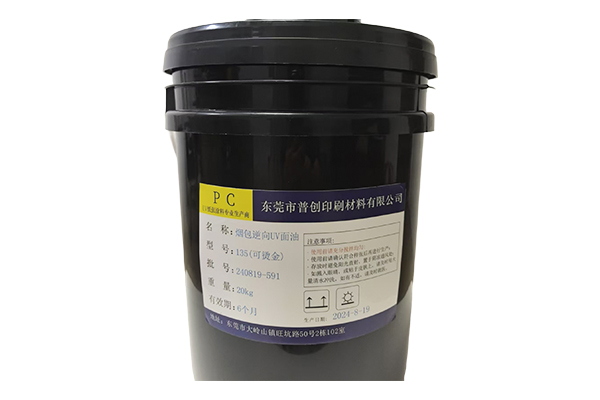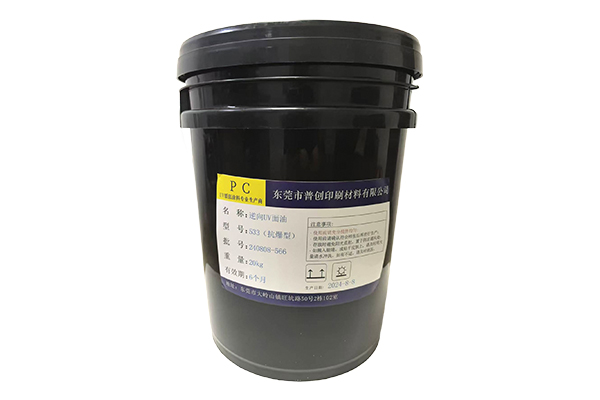What are the curing principles and process key points of cigarette pack reverse uv topcoat?
Release Time : 2025-06-06
The curing process of cigarette pack reverse uv topcoat involves unique chemical reactions and precise process control. Through specific conditions, the internal changes of the material are stimulated to transform it from a liquid state to a solid film, thereby realizing the surface decoration and protection functions. Understanding its curing principle and process key points is crucial to improving the quality and production efficiency of cigarette boxes.
The curing of cigarette pack reverse uv topcoat is based on the principle of photoinitiated polymerization. The topcoat contains key ingredients such as photoinitiators, active diluents and prepolymers. The photoinitiator is the core substance that triggers the curing reaction. When exposed to ultraviolet rays of a specific wavelength, the photoinitiator absorbs photon energy, changes its molecular structure, and produces free radicals or cations. These active substances can quickly initiate polymerization reactions of unsaturated double bonds or active groups in prepolymers and active diluents, connecting the originally dispersed molecules to each other to form a three-dimensional network polymer structure. As the reaction continues, the molecular chains continue to grow and cross-link, and the liquid topcoat gradually loses its fluidity and eventually solidifies into a hard, bright solid coating with certain properties.
In the curing process, the selection of ultraviolet light sources is particularly critical. Different types of ultraviolet light sources have different spectral distribution, light intensity and irradiation uniformity, which directly affect the curing effect. To ensure that the topcoat is fully cured, it is necessary to select an ultraviolet wavelength that matches the absorption peak of the photoinitiator so that the photoinitiator can effectively absorb light energy. At the same time, the intensity of the light source should be moderate. Excessive light may cause the surface to cure rapidly while the internal reaction is not complete, resulting in internal stress and even cracking of the coating; insufficient light will cause incomplete curing, the coating will become soft and sticky, and it will not be able to achieve the expected hardness and wear resistance. In addition, it is also very important to ensure the uniformity of ultraviolet irradiation. By reasonably designing the arrangement of the light source and the reflective device, all parts of the surface of the cigarette box can receive uniform light to avoid the phenomenon of local poor curing.
The coating process of the topcoat also has a significant impact on the curing effect. During the coating process, the coating thickness of the topcoat needs to be precisely controlled. Too thick a coating will increase the difficulty of curing, prolong the curing time, and it is easy for the surface to cure while the inside is not dry; too thin a coating may not achieve the expected decorative and protective effects. Common coating methods include gravure coating, roller coating, etc. Different coating methods are suitable for different types of cigarette boxes and production needs. No matter which method is used, it is necessary to ensure uniform coating to avoid problems such as sagging, accumulation or missing coating. Otherwise, in the subsequent curing process, the topcoat in these defective parts cannot be cured normally, affecting the overall quality of the cigarette box.
Temperature control during the curing process should not be ignored. Although cigarette pack reverse uv topcoat mainly relies on ultraviolet radiation to initiate the curing reaction, the appropriate temperature can accelerate molecular movement, promote the polymerization reaction, and improve the curing speed and effect. Before curing, keeping the substrate and ambient temperature stable will help the topcoat to be evenly coated and leveled; during the curing process, if the temperature is too high, it may cause the photoinitiator to decompose prematurely or the topcoat surface to cure rapidly, resulting in surface tension differences, causing defects such as shrinkage cavities and orange peel; if the temperature is too low, the polymerization reaction rate will slow down and prolong the curing time. Therefore, it is necessary to reasonably control the temperature during the curing process according to the characteristics of the topcoat and production conditions. The temperature can usually be adjusted by a heating device or a cooling system.
Control of the curing time is an important link to ensure the quality of curing. If the curing time is too short, the polymerization reaction in the topcoat is not sufficient, and the hardness, wear resistance, chemical resistance and other properties of the coating cannot meet the requirements; if the curing time is too long, it will not only reduce production efficiency, but also may cause excessive cross-linking of the coating, resulting in brittleness, loss of flexibility, and even yellowing. In actual production, it is necessary to determine the optimal curing time through experiments and production experience, combined with factors such as the topcoat formula, coating thickness, ultraviolet light source intensity and temperature, to ensure that the topcoat is completely cured and the performance is optimal.
During the implementation of the curing process, equipment maintenance and calibration are also key points that cannot be ignored. After long-term use of ultraviolet curing equipment, the luminous intensity of the light source will gradually decay, and the reflectivity of the reflector will also decrease, affecting the irradiation effect of ultraviolet rays. Therefore, it is necessary to regularly maintain the equipment, replace aging light sources and damaged parts in time, clean and calibrate the reflector, and ensure that the equipment is always in good working condition. At the same time, other related equipment such as coating equipment and temperature control systems should also be regularly inspected and maintained to ensure the stability and reliability of the entire curing process.
The curing of cigarette pack reverse uv topcoat is a complex process involving many factors, from the principle of light-induced polymerization to the key points of ultraviolet light source, coating process, temperature control, curing time and equipment maintenance, each link is interrelated and affects each other. Only by fully mastering and strictly controlling these key points can we achieve high-quality curing effect, give cigarette boxes beautiful appearance and good performance, and meet the market's diverse needs for cigarette packaging.






